
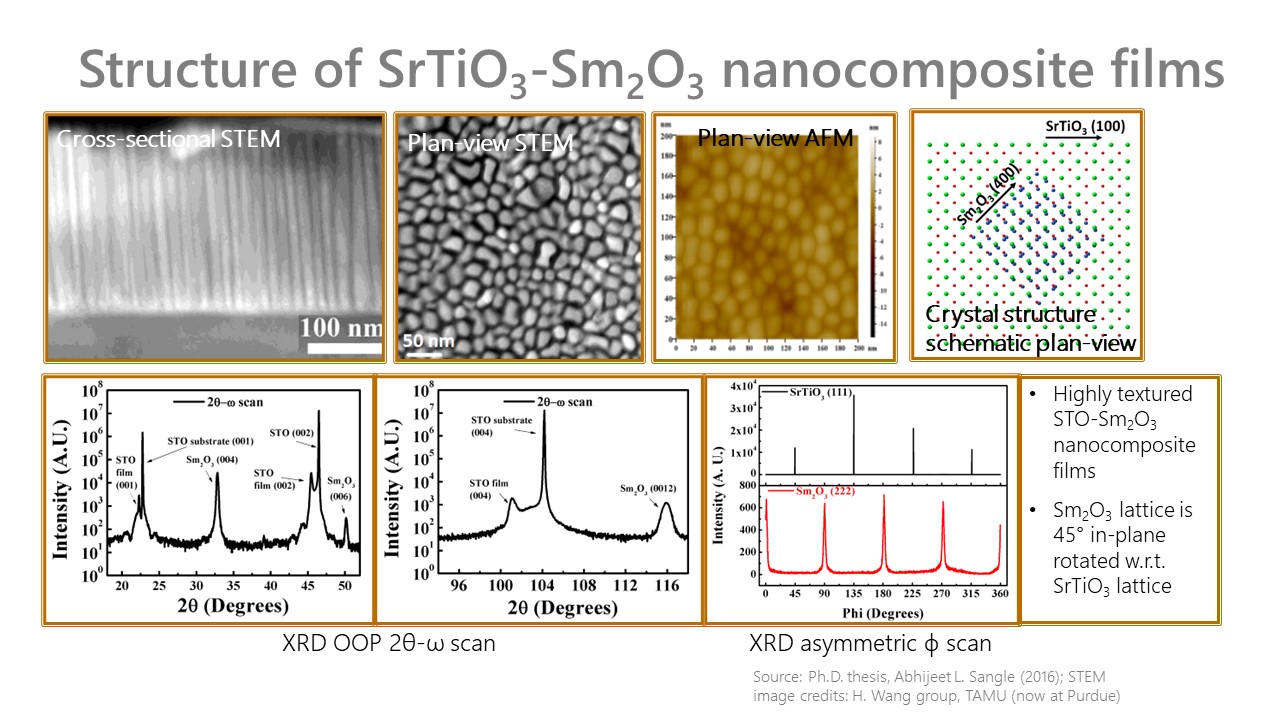

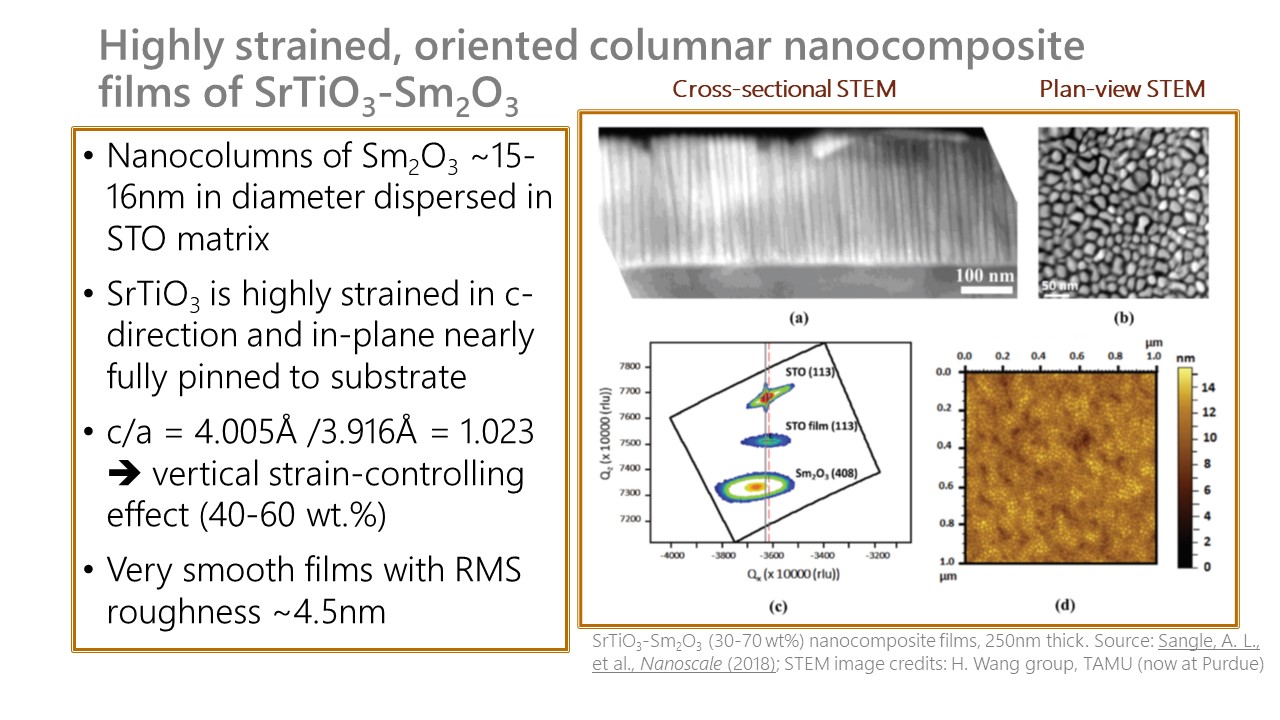
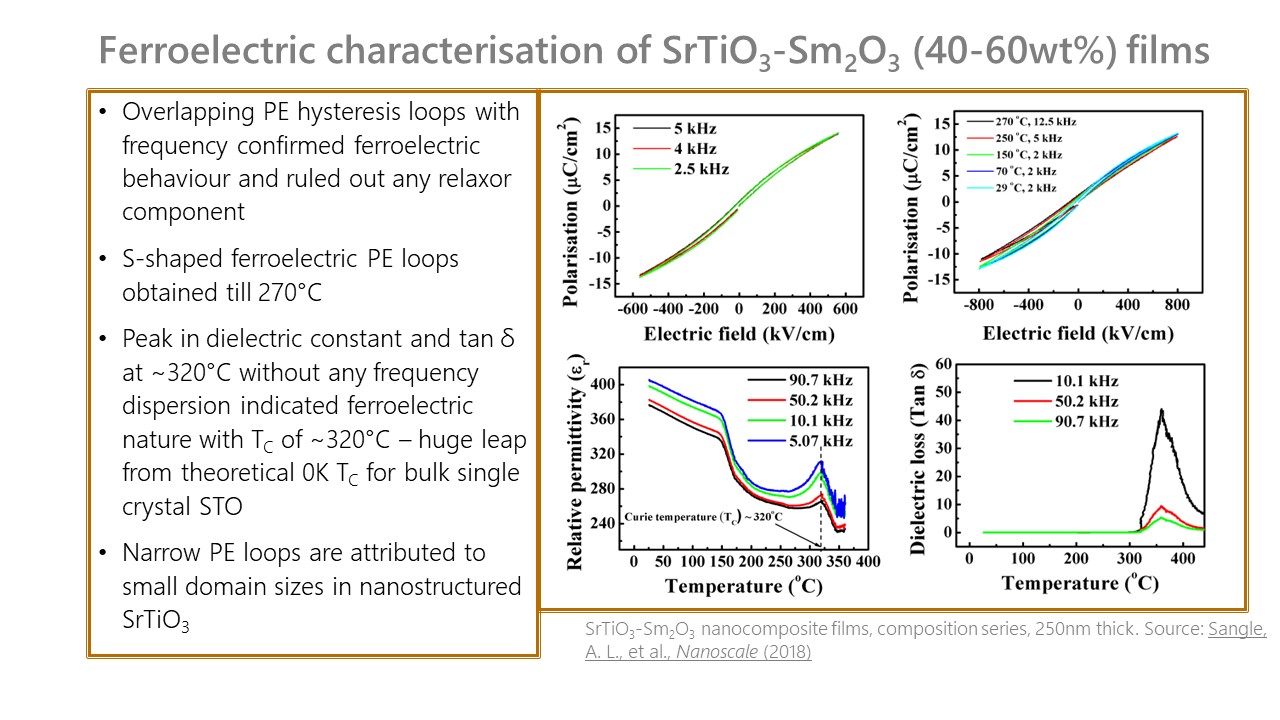
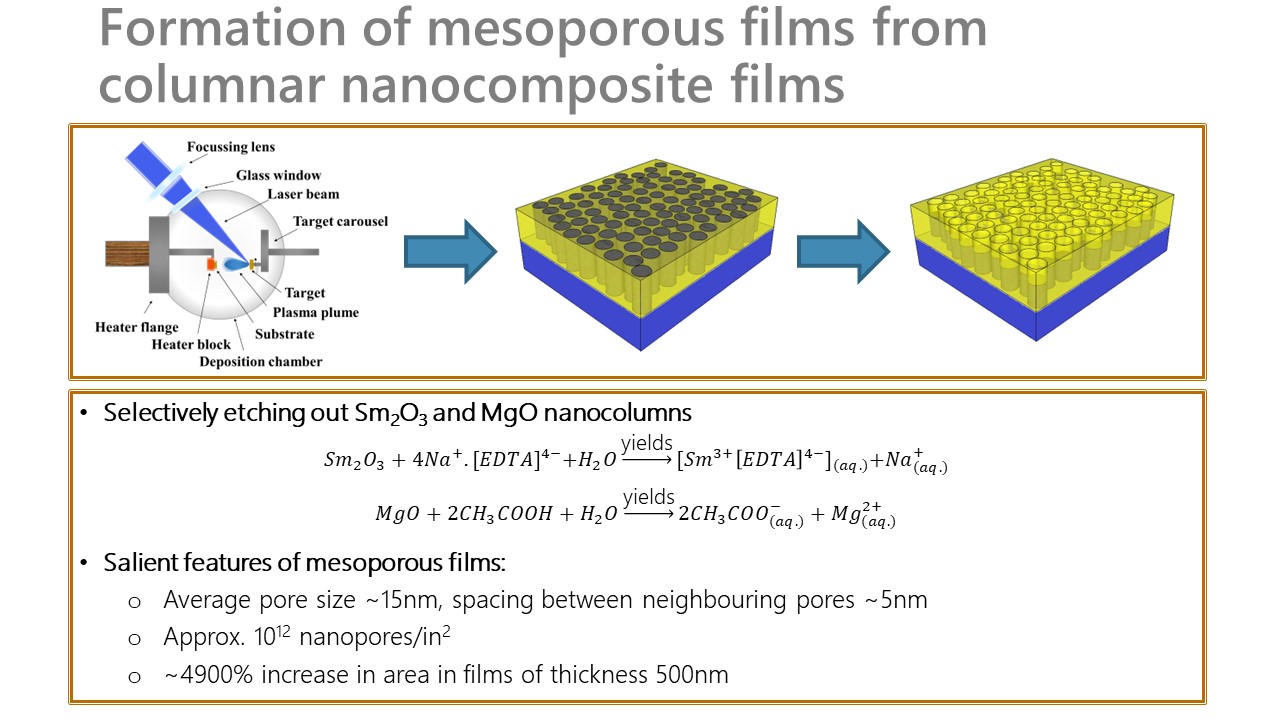
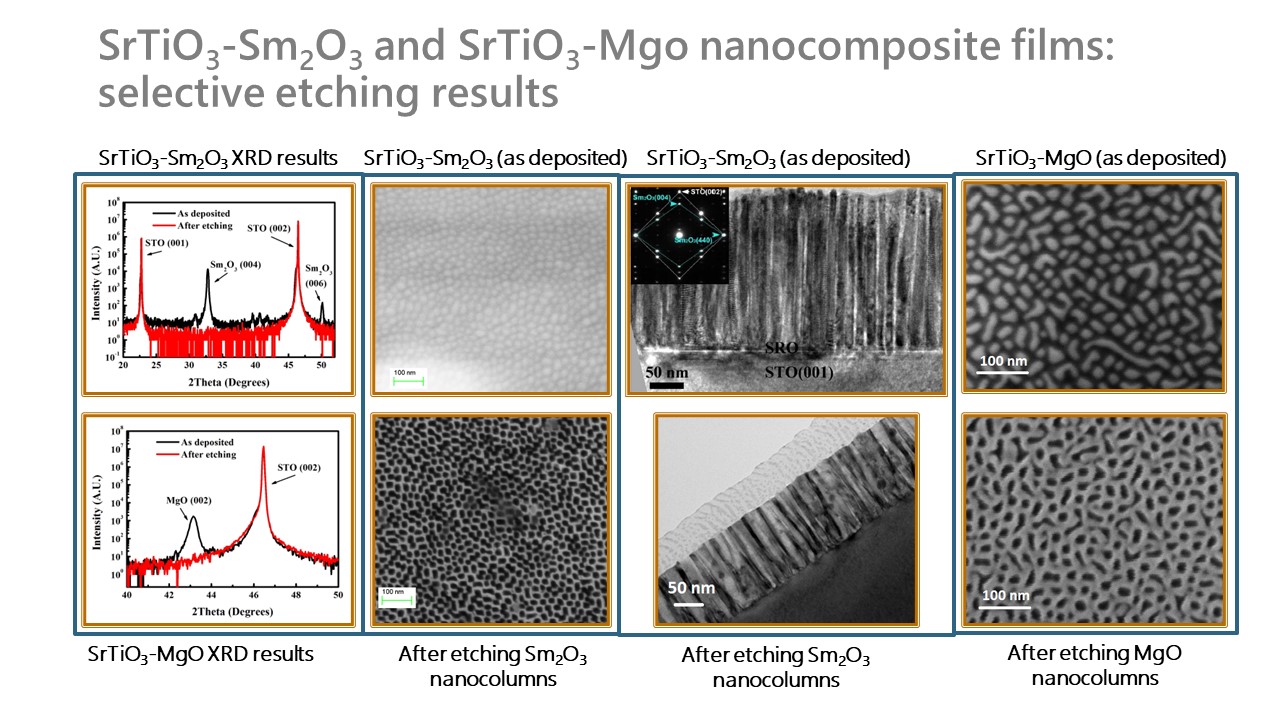
VAN films consist of vertically aligned nanocolumns of one material embedded in the matrix of another. They are usually formed in a self-assembled manner by PVD techniques such as pulsed laser deposition (PLD), sputter deposition, molecular beam epitaxy (MBE), etc.
Ferroelectric properties such as remanent polarisation, Curie temperature and piezoelectric stress and charge coefficients can be enhanced by imparting strain to corresponding phase by forming vertical interface with another phase.
At the vertical interface, because of the lattice discontinuities between constituent phases, oxygen vacancies can be created at regular intervals throughout the thickness of the film. These oxygen vacancies act as ionic conduction channels making them useful for applications such as ReRAM and electrodes for fuel cells.
One of the phases from the VAN films can be selectively etched out leaving the other phase intact. This creates extremely high surface area mesoporous films, which can be useful as photocatalysts or gas sensors.